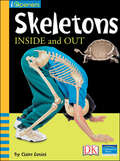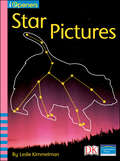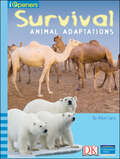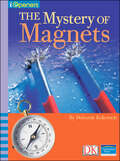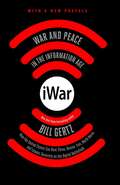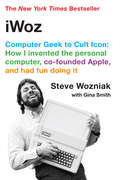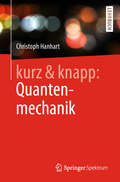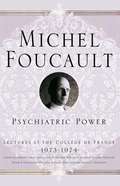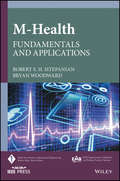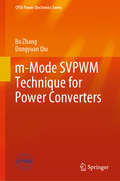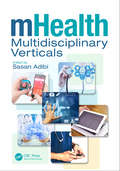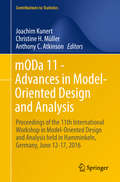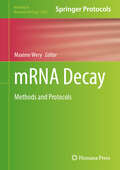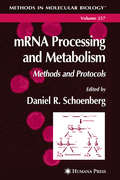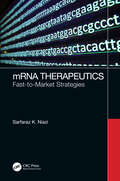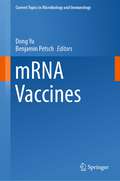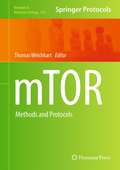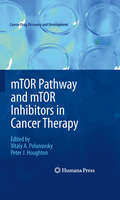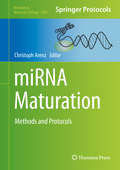- Table View
- List View
iOpener: Skeletons Inside and Out (iOpeners)
by Claire DanielThis book covers everything you need to know about human and animal skeletons. Diagrams and photographs bring the subject to life, while a glossary, an index, and discussion questions aid in reading comprehension.Grade: 4Subject: Life ScienceGenre: Informational TextComprehension Skill/Strategy: Compare and ContrastDiagnostic Reading Assessment (DRA/EDL): 40Guided Reading Level: RLexile Level: 770LDK's iOpeners equip K-6 students with the skills and strategies they need to access and comprehend nonfiction so that they are not only learning to read but reading to learn. The combination of high-interest content and eye-popping photography of iOpeners brings science and social studies topics to life, raises student achievement in reading, and boosts standardized test scores.
iOpener: Star Pictures (iOpeners)
by Leslie KimmelmanStar Pictures introduces young readers to some key constellations, beautifully photographed and then outlined to show their shapes. This 43-word book will ignite schoolchildren's interest in astronomy. It also includes discussion questions to aid in reading comprehension.Grade: KindergartenSubject: Earth ScienceGenre: Informational TextComprehension Skill/Strategy: Use Picture CluesDiagnostic Reading Assessment (DRA/EDL): 4Guided Reading Level: CLexile Level: 4DK's iOpeners equip K-6 students with the skills and strategies they need to access and comprehend nonfiction so that they are not only learning to read but reading to learn. The combination of high-interest content and eye-popping photography of iOpeners brings science and social studies topics to life, raises student achievement in reading, and boosts standardized test scores.
iOpener: Survival: Animal Adaptations (iOpeners)
by Alice CaryThis book covers everything you need to know about how all kinds of animals adapt in various habitats. Diagrams, fun fact boxes, and photographs bring the subject to life, while a glossary, an index, and discussion questions aid in reading comprehension.Grade: 5Subject: Life ScienceGenre: Informational TextComprehension Skill/Strategy: Make InferencesDiagnostic Reading Assessment (DRA/EDL): 50Guided Reading Level: ULexile Level: 880LDK's iOpeners equip K-6 students with the skills and strategies they need to access and comprehend nonfiction so that they are not only learning to read but reading to learn. The combination of high-interest content and eye-popping photography of iOpeners brings science and social studies topics to life, raises student achievement in reading, and boosts standardized test scores.
iOpener: The Mystery of Magnets (iOpeners)
by Deborah KekewichThis book explains the science behind magnets--as well as providing a lot of fun activities and games to do with them! This title contains a glossary of terms and discussion questions to aid in reading comprehension.Grade: 3Subject: Physical ScienceGenre: Procedural TextComprehension Skill/Strategy: Identify Cause and EffectDiagnostic Reading Assessment (DRA/EDL): 38/34Guided Reading Level: PLexile Level: 540LDK's iOpeners equip K-6 students with the skills and strategies they need to access and comprehend nonfiction so that they are not only learning to read but reading to learn. The combination of high-interest content and eye-popping photography of iOpeners brings science and social studies topics to life, raises student achievement in reading, and boosts standardized test scores.
iScience: From Bacteria to Plants
by Juli Berwald Michelle Anderson John F. Bolzan Rachel Clark [et al.]"From Bacteria to Plants, the Life iScience Module provides students with accurate and comprehensive coverage of bacteria, protests, fungi, and plants. The strong content coverage integrates a wide range of hands-on experiences, critical-thinking opportunities, and real-world applications. The modular approach allows you to mix and match books to meet your curricula."
iWar: War and Peace in the Information Age
by Bill GertzNew York Times bestselling author and veteran Washington Times columnist explains how the United States can beat China, Russia, Iran, and ISIS in the coming information-technology wars.America is at war, but most of its citizens don’t know it. Covert information warfare is being waged by world powers, rogue states—such as Russia, China, Iran, and North Korea—and even terrorist groups like ISIS. This conflict has been designed to defeat and ultimately destroy the United States. This new type of warfare is part of the Information Age that has come to dominate our lives. In iWar, Bill Gertz describes how technology has completely revolutionized modern warfare, how the Obama administration failed to meet this challenge, and what we can and must do to catch up and triumph over this timely and important struggle.
iWoz: Computer Geek to Cult Icon
by Steve Wozniak Gina Smith"iWoz? traces the life and times of a brilliant, gifted... individual whose contributions to the scientific, business and cultural realms are extensive."--?Bookpage Before slim laptops that fit into briefcases, computers looked like strange, alien vending machines. But in "the most staggering burst of technical invention by a single person in high-tech history" (?BusinessWeek?) Steve Wozniak invented the first true personal computer. Wozniak teamed up with Steve Jobs, and Apple Computer was born, igniting the computer revolution and transforming the world. Here, thirty years later, the mischievous genius with the low profile treats readers to a rollicking, no-holds-barred account of his life--for once, in the voice of the wizard himself.
kurz & knapp: Das Wichtigste auf unter 150 Seiten
by Christoph HanhartIn diesem Buch wird Ihnen der Vorlesungsstoff zur Quantenmechanik 1 auf weniger als 150 Seiten präsentiert. Der Autor konzentriert sich dabei auf das Wesentliche: Er zeichnet einen klaren roten Faden, behandelt längere Rechnungen erst in Aufgaben zu den jeweiligen Kapiteln und verzichtet auf Historisches. Mit relativ kurzen und modular aufgebauten Kapiteln ist das Buch sowohl zum Nachschlagen als auch zum Selbststudium geeignet. Jedes Kapitel beginnt mit einem kurzen Überblick über das jeweilige Thema und zentralen Fragen, die im Hauptteil adressiert werden. Den Abschluss jedes Kapitels bilden Zusammenfassungen, die die Fragen vom Anfang wieder aufgreifen und in kompakter Form beantworten.
le Psychiatric Power Lectures at the Collège de France, 1973-1974
by Michel Foucault Graham Burchell Arnold I. Davidson Alessandro Fontana Jacques Lagrange Francois EwaldIn this new addition to the Coll#65533;ge de France Lecture Series Michel Foucault explores the birth of psychiatry, examining Western society's division of 'mad' and 'sane' and how medicine and law influenced these attitudes. This seminal new work by a leading thinker of the modern age opens new vistas within historical and philosophical study.
m-Health: Fundamentals and Applications
by Bryan Woodward Robert S. IstepanianThis book introduces the concept of m-Health, first coined by Robert S. H. Istepanian in 2003. The evolution of m-Health since then--how it was transformed from an academic concept to a global healthcare technology phenomenon--is discussed. Afterwards the authors describe in detail the basics of the three enabling scientific technological elements of m-Health (sensors, computing, and communications), and how each of these key ingredients has evolved and matured over the last decade. The book concludes with detailed discussion of the future of m-Health and presents future directions to potentially shape and transform healthcare services in the coming decades.
m-Mode SVPWM Technique for Power Converters (CPSS Power Electronics Series)
by Bo Zhang Dongyuan QiuThis book presents a novel control method for power converters, referred to as m-mode control. It provides an overview of traditional control methods for inverters – e.g. PWM and SVPWM – and the theory of the m-mode control method, while also discussing and applying m-mode control on various types of converters (including three-phase, nine-switch, five-leg and multi-level inverters, PWM rectifiers and modular multi-level converters). The book provides readers with sufficient background and understanding to delve deeper into the topic of SVPWM control. It is also a valuable guide for engineers and researchers whose work involves power converter control.
mHealth Multidisciplinary Verticals
by Sasan AdibiAn in-depth overview of the emerging concept; Mobile Health (mHealth), mHealth Multidisciplinary Verticals links applications and technologies to key market and vendor players. It also highlights interdependencies and synergies between various stakeholders which drive the research forces behind mHealth. The book explores the trends and directions w
mODa 11 - Advances in Model-Oriented Design and Analysis
by Anthony C. Atkinson Joachim Kunert Christine H. MüllerThis volume contains pioneering contributions to both the theory and practice of optimal experimental design. Topics include the optimality of designs in linear and nonlinear models, as well as designs for correlated observations and for sequential experimentation. There is an emphasis on applications to medicine, in particular, to the design of clinical trials. Scientists from Europe, the US, Asia, Australia and Africa contributed to this volume of papers from the 11th Workshop on Model Oriented Design and Analysis.
mRNA Decay: Methods and Protocols (Methods in Molecular Biology #2863)
by Maxime WeryThis detailed volume explores techniques for researching the diverse and specialized mechanisms for mRNA degradation, both in the cytoplasm and the nucleus. From classical methods for studying RNA degradation at the single RNA level to the latest transcriptome-wide approaches involving long-read sequencing and metabolic labeling, this book focuses on methods for eukaryotic models, such as procedures for studying deadenylation, decapping and exoribonuclease activity, assessing RNA decay rate, characterizing RNA degradation intermediates, RNA-proteins interactions, and more. Written for the highly successful Methods in Molecular Biology series, chapters include introductions to their respective topics, lists of the necessary materials and reagents, step-by-step and readily reproducible laboratory protocols, and tips on troubleshooting and avoiding known pitfalls. Authoritative and practical, mRNA Decay: Methods and Protocols provides both new and experienced RNA researchers with an inspiring collection of protocols to prompt further investigation of these vital degradation pathways.
mRNA Processing and Metabolism
by Daniel R. SchoenbergA collection of readily reproducible techniques for the study of mRNA processing and metabolism. These cutting-edge techniques range from cotranscriptional processing events that occur while the mNA is engaged with elongating RNA polymerase II, to in vivo and in vitro splicing and its biochemical analysis, and alternative splicing. Additional methods cover mRNA export, the recovery and analysis of mRNP complexes, cytoplasmic translation, mRNA degradation in vivo and in vitro, and the controversial concept of nuclear translation. Each proven protocol is described in step-by-step detail and contains a background introduction outlining the principle behind the technique, lists of equipment and reagents, and tips on troubleshooting and avoiding know pitfalls.
mRNA Therapeutics: Fast-to-Market Strategies
by Sarfaraz K. NiaziThis book is the most comprehensive and complete treatise on nucleic acid therapeuticproducts, including mRNA vaccines, their manufacturing, formulations, andtesting for safety and efficacy. Details include cGMP-compliant manufacturing andregulatory filing steps. A new concept of “biosimilar” mRNA vaccine is presentedto secure fast approval of copies of mRNA vaccines. Projections of financial plansto establish RNA manufacturing facilities are provided, along with details of supplychain management. Finally, the future of nucleic acid products in gene therapy andother newer applications is presented, along with a perspective that all new vaccineswill be the nucleic acid type that will further provide first-time prevention of autoimmunedisorders. It is projected that both big pharma and start-ups will enter this field,and we can expect significant additions to our drug armamentarium soon.
mRNA Vaccines (Current Topics in Microbiology and Immunology #440)
by Dong Yu Benjamin PetschThe formulation and the technological advancements in RNA biology, chemistry, stability, and encapsulated delivery systems that have enabled the development of fully synthetic mRNA vaccines are discussed in this volume. The applications of the mRNA technology is covered, focusing on infectious diseases but also touching on other indications, such as immunotherapies and molecular therapies. Potent and long-lasting immune responses observed in animal models, encouraging data from early human clinical studies, together with the success of two mRNA-based COVID-19 vaccines support the use of mRNA-based vaccination as an attractive alternative to conventional vaccine approaches. Consequently, the development progress of the technology, particularly on production, capabilities, and clinical development is reviewed. Topics on safety, regulatory issues, and possible challenges to the mRNA vaccination approach round off this book. Thanks to their high potency, the prospect for generic, low-cost manufacturing processes, and entirely synthetic nature, the future for mRNA vaccines is highly promising. Importantly, mRNA vaccines have the potential to minimize the time between pathogen identification and vaccine release with a huge impact on public health. As the mRNA-based vaccination technology has been progressing rapidly, the book is intended to be an end-to-end review series, covering everything from basic RNA biology and preclinical studies to the manufacturing strategy, clinical development and regulatory approval. It provides established RNA researchers and developers with updates on the latest advancements in the field and allows for a quick but comprehensive overview of this transformative technology, its application, and future potential.
mTOR
by Thomas WeichhartSince its discovery, the mammalian target of rapamycin (mTOR) has been shown to regulate many critical molecular processes in eukaryotes such as metabolism, growth, survival, aging, synaptic plasticity, memory, and immunity. In mTOR: Methods and Protocols expert researchers in the field detail many of the methods which are now commonly used to study mTOR. These include methods and techniques used for the study of the mTOR pathway and potential therapeutic applications of mTOR inhibitors such as, immunosuppressive and anticancer agents. Written in the highly successful Methods in Molecular BiologyTM series format, chapters include introductions to their respective topics, lists of the necessary materials and reagents, step-by-step, readily reproducible laboratory protocols, and key tips on troubleshooting and avoiding known pitfalls. Authoritative and practical, mTOR: Methods and Protocols seeks to aid scientists in the further study of this crucially important molecule ranging from the analysis of signal transduction events within a cell to the assessment of complex human diseases such as metabolic disorders or cancer.
mTOR Pathway and mTOR Inhibitors in Cancer Therapy
by Peter J. Houghton Vitaly A. PolunovskymTOR Pathway and mTOR Inhibitors in Cancer Therapy provides an up-to-date survey of the rapidly advancing field of cancer therapy. Our understanding of the mechanisms involved in cancer genesis and progression underwent unprecedented expansion during the last decade, opening a new era of cancer treatment – targeted therapy. The surge in this area results in no small part from studies conducted jointly by basic health scientists and clinical investigators. It is our hope that this book will help foster even further collaboration between investigators in these two disciplines. In this work, experts in TOR signaling have contributed in two thematic areas: mTOR Signaling and Cancer Therapy (chapters 1 - 8) and Therapeutic Targeting Downstream of mTOR (chapter 9 – 13). All chapters of mTOR Pathway and mTOR Inhibitors in Cancer Therapy are completely new or have been extensively updated by their authors; and we are indebted to all authors who have exemplified the links between these 2 thematic areas.
miRNA Maturation
by Christoph ArenzIn miRNA Maturation: Methods and Protocols, expert researchers in the field detail many of the methods which are now commonly used to study miRNA maturation. These included established methods such as fluorescent and non-fluorescent methods for homogenous assays of Dicer-mediated miRNA maturation or an in vivo assay for Drosha activity. Moreover, the volume also contains useful, but less-common methods that are hard to find elsewhere. Written in the highly successful Methods in Molecular Biology series format, chapters include introductions to their respective topics, lists of the necessary materials and reagents, step-by-step, readily reproducible laboratory protocols, and key tips on troubleshooting and avoiding known pitfalls. Authoritative and practical, miRNA Maturation: Methods and Protocols seeks to widen the view on miRNA as biological mediator and potential drug target.
